You are here
Kobyz.
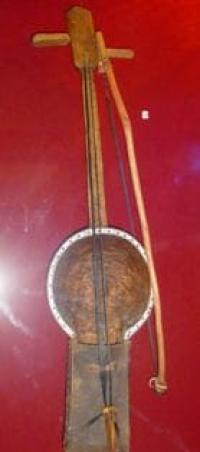
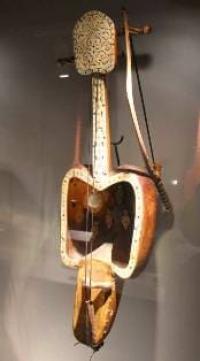
Music of Kazakhstan.
“Kobyz is a kind of two-stringed viola, the strings are made of horse hair and played with a bow. Kobyz has the difference against our stringed instruments that it does not have a top deck, the body has a round figure, the handle is so extended that the strings cannot be pressed against it, but different tones are taken with a harmonic.
In general, this is a very difficult and pleasant instrument, although it is not very sonorous. The balalaika and the newest songs have survived now completely djir and kobyz. The following forms of poetry now exist in the steppe"
Chokan Valikhanov. "From the Kazakh folk poetry." Collected works in 5 volumes. 1985 Volume 1. Page 280 - 286.
Kazakh folk musical instruments.
The next legend reveals that the musical instrument is capable of practical physical action according to the will of the owner."One shaman who had no horse put his kobyz to participate in a horse race.
During shamanic rites, it was the kobyz and dangyra-tambourine that turned into fast horses on which the shaman backed to whatever place of the Higher, Middle and Lower Worlds inhabited by people and spirits, both good and evil.
Knowing the super natural power of his kobyz the shaman tied it to a big tree in order to give the ordinary horses an upper hand in the start. The people who gathered at the finish watched in amazement as the kobyz lead the race dragging the uprooted tree behind it in a cloud of dust.
The historical development of magical and ritual instrumental music led to the formation of an independent branch of professional instrumental music. It reached the climax of its development thanks to the creative work of such eminent kyui-composers of the XIX-th – XX-th centuries as Kurmangazy, Dauletkerey, Dina, Kazangap, Yhlas, Tattimbet, Mammen, Sugur and others.
Kobyz is a bow instrument with two strings. It was hollowed out of one whole wooden piece – juniper (arsha), maple, pine-tree and birch. The instrument consisted of three parts: head (bas), middle (base is keude) and lower part (ayak).
The base is made in the form of an open bowl stretched downside. This lower part of the instrument is covered with leather (sounding board). The support (tiek) is established on it. Even in our days, the strings for kobyz are made of horse-tail.
The bow has an arched shape and it looks like a bow weapon: the bun of horsehair is tied to both ends of the bent branch and fixed by the strong thread of camel wool. The performer enfolds the bow from aside with his hand.
The shaman instrument looked quite strangely: there were owl’s feathers on the head, various metal plates in the form of horn curls and ringing bird images were hanging around the head; the mirror was located on the bottom of the bowl. All these were not just decoration but the shaman signs-symbols.
Kobyz possesses unusually rich and colourful timbre. This professional music art amply reflecting the life of a Kazakh nomad still adheres to its ancient sacral roots that once conceived it. The ancient notions and piety towards the instruments and music was constantly preserved in the traditional Kazakh society providing for the highest spiritual level of music art and a special deferential attitude towards the musical instruments.
Common people, for example, dared not to touch the shaman's kobyz. The balance between the courses of Life and Death on earth can be maintained by playing the kobyz, another musical instrument recounted in the following legend about the first shaman Korkut.
'It was at the age of 20 that one day a man in white appeared before Korkut in a dream and told him he was to live only till the age of forty. Korkut decided to search for immortality. He mounted the fast, she-camel Zhelmaya and started on his long journey.
On his journey he met people digging the earth and he inquired what they were digging for. They answered that they were digging a grave for Korkut. Feeling that these places were a danger to him he rode furiher and further until he travelled to all the four corners of the world. But everywhere he went, a grave was being prepared for him. Korkut returned to his native banks of Syr-Darya River in the center of the world and made the first kobyz.
The hide of Zhelmaya, which he sacrificed, was tightly pulled over the instrument. He then laid a carpet by the river, sat on it and played the kobyz day and night. To the tune of his kobyz nature stilled. The flow of Syr-Darya's waters slowed down.
The animals and the birds became silent. People stopped their work and even Death under the spell of his music froze daring not to approach him. At long last, Korkut tired himself and dozed off. When the kobyz he held became silent.
Death, disguised as a snake, took hold of him. Korkut is now the Ruler of the Underwater World - the world of the dead. But he assists living shamans who having inherited his sacred instrument, help and guard people from premature death by playing the kobyz.
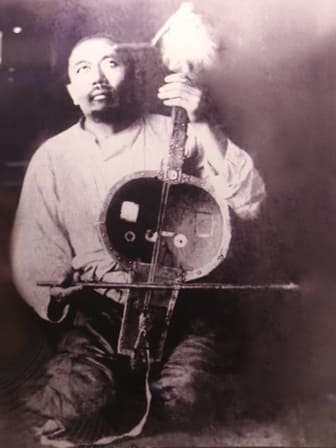
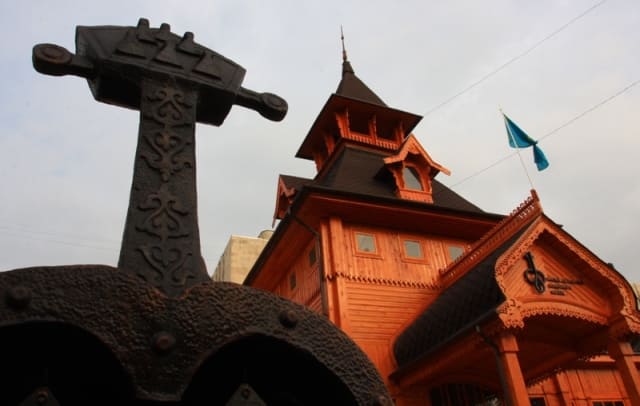
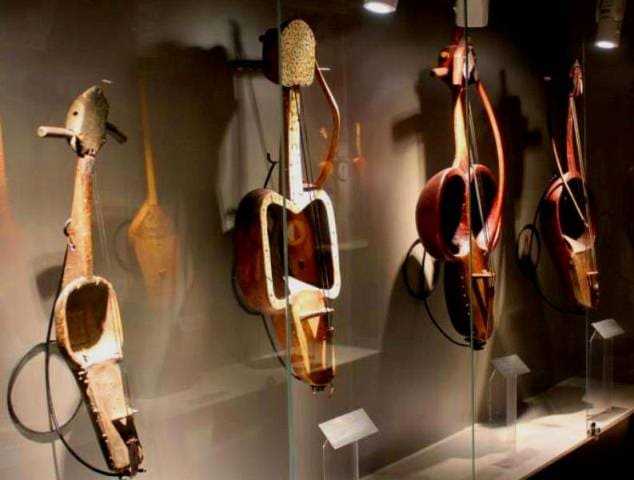


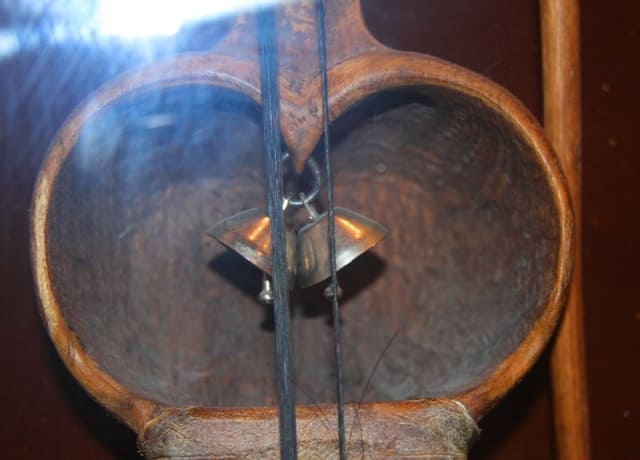
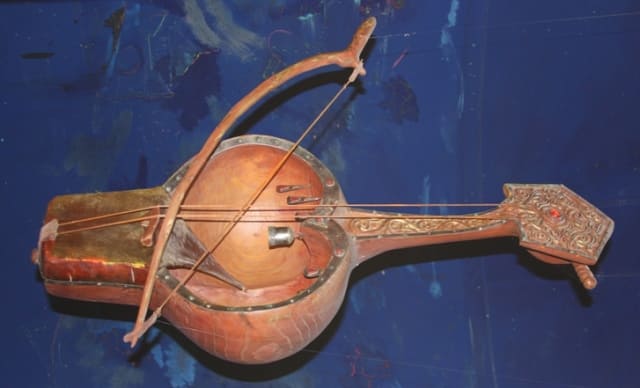
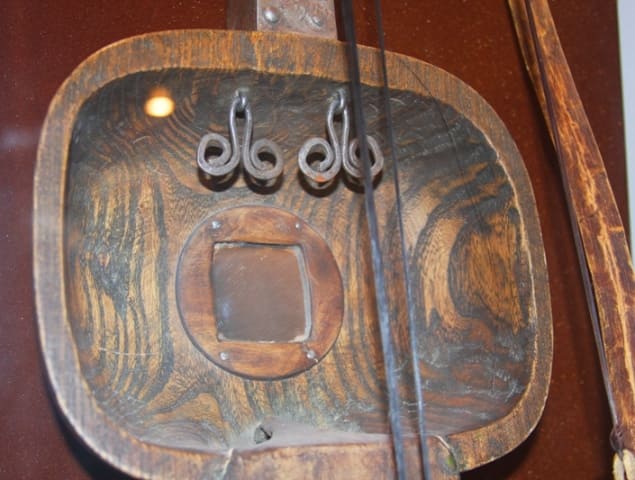

Authority:
http://www.bukhara-carpets.com
Photos except for the first (bottom) black and white photo
Alexander Petrov.







